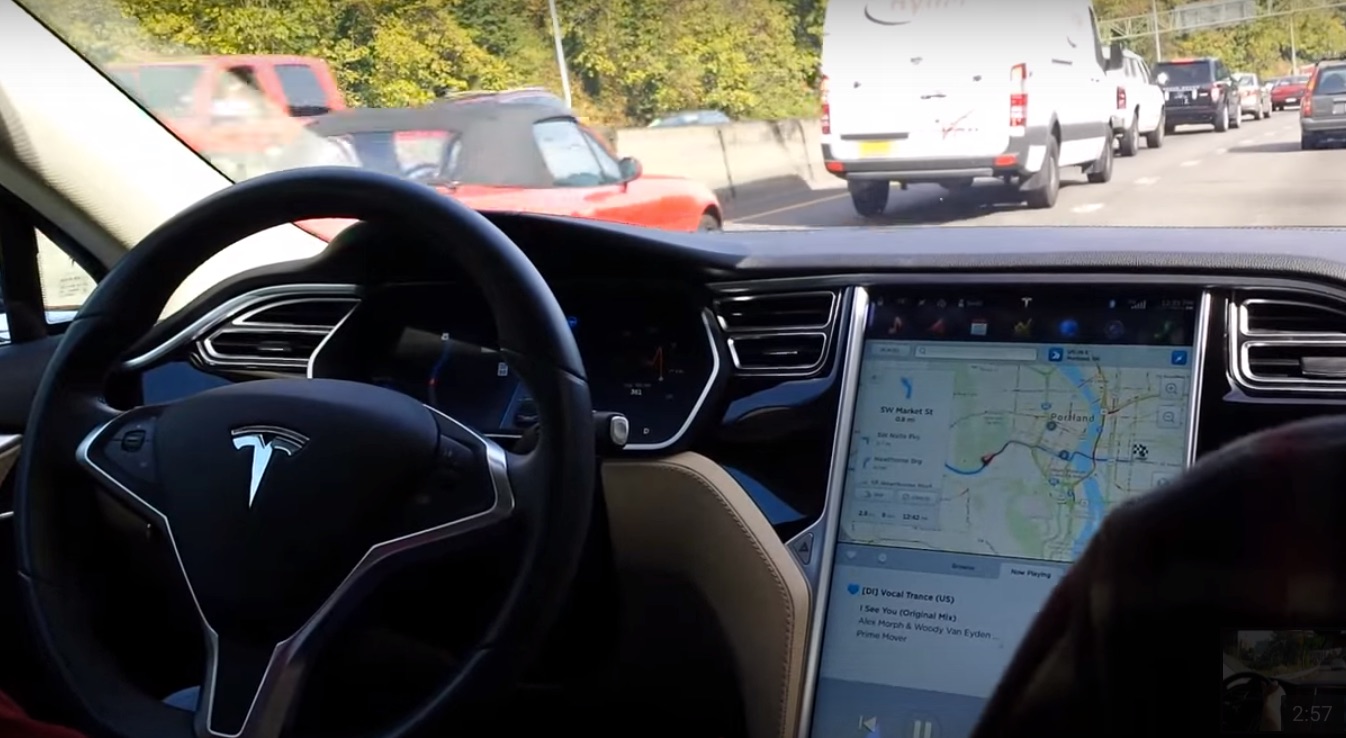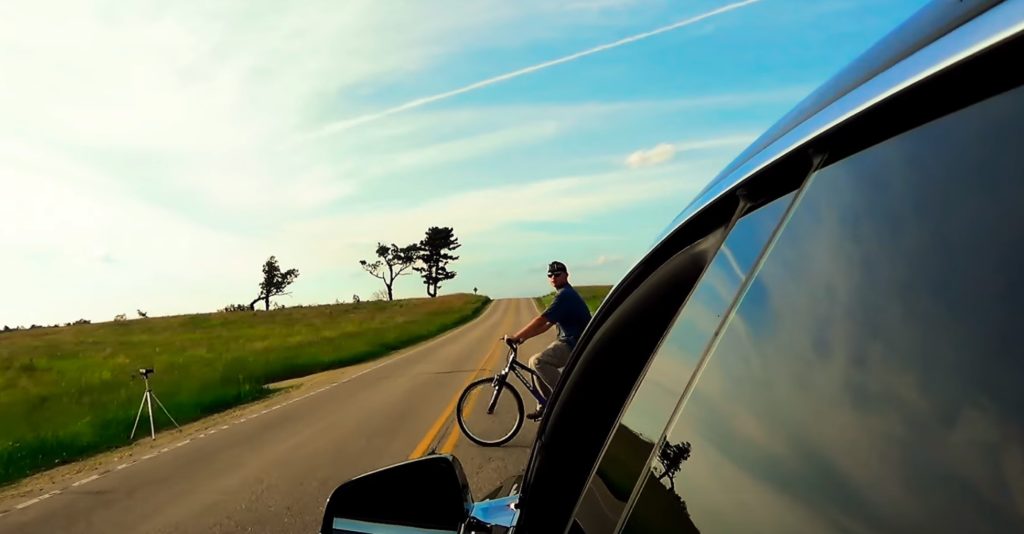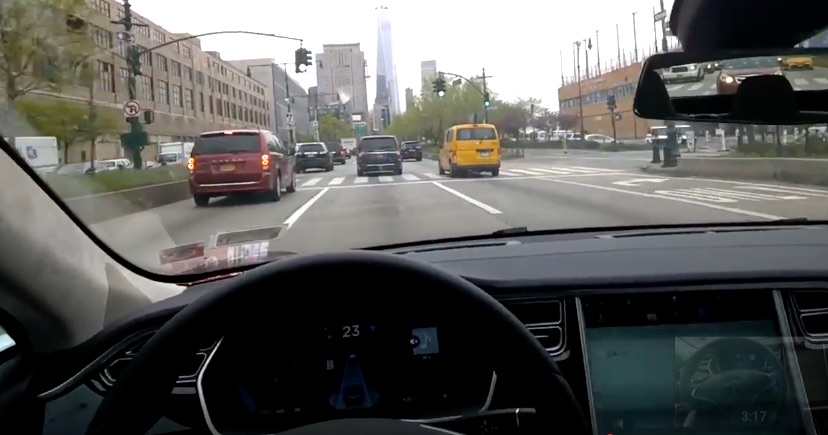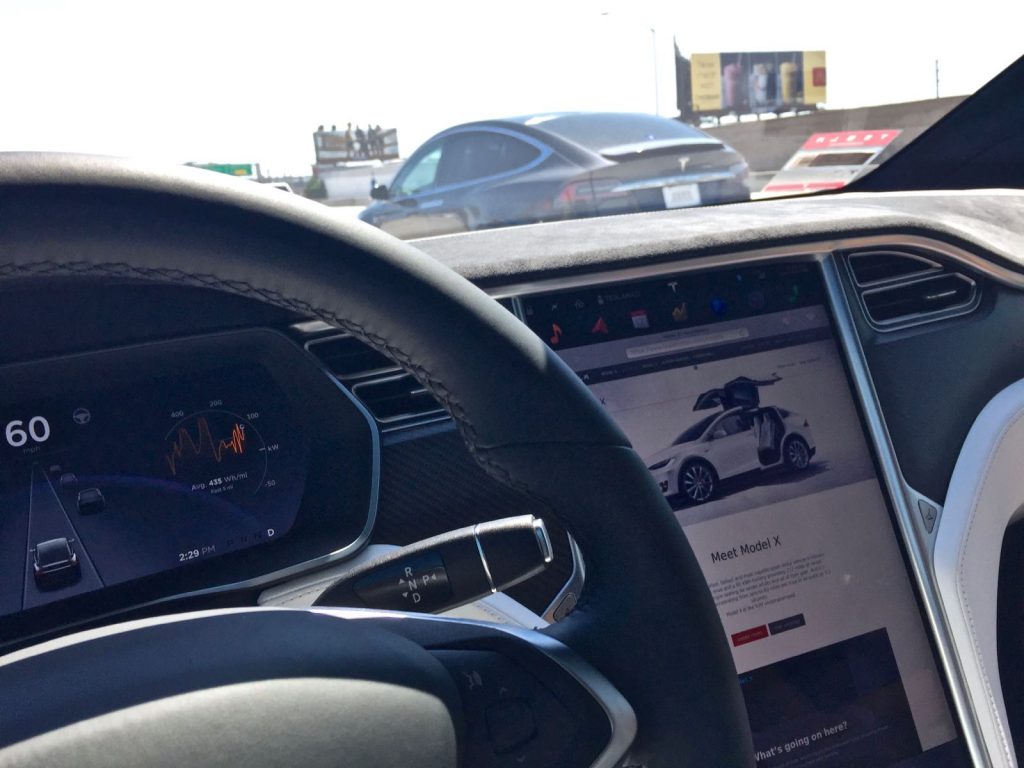

Lifestyle
Tesla Network could bring radical change to the way we own cars
Just one tap on your phone could summon a Tesla right to your house as you enjoy your morning coffee. Not a morning person? Don’t worry about needing to make small talk with your driver—this car is driving itself. Take your coffee with you, hop in, and travel in comfort and style wherever you want to go. All that, and your trip costs less than a bus ticket.
That is the future according to Elon Musk with his proposed autonomous ride-sharing “Tesla Network.”
The ambitious Tesla CEO expects all new cars to be fully autonomous within the next 10 years and that owning a “regular” non-self-driving car will be akin to owning a horse. According to Musk’s “Master Plan, Part Deux”— which he released in summer 2016 as a follow up to his 2006 “Secret Tesla Motors Master Plan”— Tesla’s objectives include the official development of “a self-driving capability that is 10X safer than manual via massive fleet learning” and the ability of “car to make money for you when you aren’t using it.” Given that the typical car owner only uses their vehicle during about 5 to 10 percent of the day, having your car make money for the other 90 to 95 percent of the day could be a pretty sweet deal. While you’re at work, asleep, or even on vacation, your Tesla could be driving around the city, picking up and dropping off passengers without any extra effort on your part.
Tesla ride-sharing
The Tesla Network has the potential to upset the established ride-hailing giants, like Uber, in significant ways. Yet, it also has the potential to simply never materialize. Which road the Tesla Network ends up driving down depends on how quickly Tesla can develop its autonomous technology— and how quickly people can begin to trust it with their lives.

Tesla Model S owner tests human detection capabilities of Autopilot 2.0
All Tesla vehicles currently in production are equipped with the hardware necessary to support full autonomous driving in the future. For now, while Autopilot is impressive— it can change lanes, navigate traffic jams, and brake for obstacles with no human guidance needed—, it is far from perfect. The program is still technically in “public beta” testing, and rated by the National Transportation Safety Board as a 2 out of 5 on its scale of autonomy. To make up an effective fleet of self-driving vehicles riding around town while their owners are at work, Autopilot needs to be rated as a Level 5 on the NTSB’s scale. Musk predicts that Autopilot will be at true Level 5 autonomy within just two years. Even more ambitiously, he has announced that a Tesla will be able to drive completely autonomously from California to New York City by the end of this year.
Having this fleet could radically change the way that people get around each day. In a recent TED Talk, Musk said that the Tesla Network will provide cheaper transportation than public transport. This outcome would require both a large number of autonomous vehicles to be available to the public and would also require a large number of the public to use those vehicles. If both of these conditions are met, costs would plummet, potentially enough that Musk’s claim that riding on the Network “would cost less than a bus ticket” will come true. The owners of the Tesla Network fleet may have even more to benefit from the enterprise. By capitalizing on the average 95% of time their cars are simply parked in a garage or lot, Tesla hopes owners will be able to offset the relatively high cost of their vehicles or even exceed the cost and actually make profit.
However, just because one can own a Tesla with “Full Self-Driving Capability,” does not mean that they’re given free rein over the way they use that facility. Included in their order is a short, but important, disclaimer to sign: “Please note that using a self-driving Tesla for car sharing and ride hailing for friends and family is fine, but doing so for revenue purposes will only be permissible on the Tesla Network.”
The Competition
Musk is set on ensuring that the Tesla Network and its reputation grows in a controlled and organized fashion— and that the owner can’t use their car to support other competitors, like Uber or Lyft.
For those competitors, the Tesla Network threatens to disrupt their established leadership of the ride-hailing industry. Uber and Lyft, as well as automakers such as Cadillac, Audi, and Volvo, are furiously working to release their own Level 5 self-driving fleets of vehicles first, to take control of the market before anyone else can.
In a Business Insider interview, the president of GM, Dan Ammann, said most people won’t have their first autonomous vehicle experience in a car they actually own. Rather, he believes “it’s very clear that the first application of autonomous vehicles is in a ride-sharing setting.” GM has recently partnered with Lyft to develop autonomous vehicles. Tesla, meanwhile, is effectively locking Uber, Lyft, and other similar enterprises out of its Autopilot technology with its prohibition on using Tesla self-driving tech for revenue outside of the Network. Musk has implied that Tesla is not looking to be a direct competitor of Uber, saying, “It’s not Tesla versus Uber, it’s the people versus Uber.” On the other hand, Tesla rebuffed an offer last year by Uber’s former-CEO Travis Kalanick to partner in self-driving projects, as reported by Bloomberg.
Many people will use the Tesla Network to simply have experience riding in a Tesla that they may not be able to afford on their own. But for those who do own the coveted cars, how many will be willing to let others use their Teslas without supervision? Matthew DeBord of Business Insider notes, “Musk and his team are clearly thinking economically when they think about the Tesla Network. But they might not be thinking about how people really own cars — especially Teslas, which have around them a Ferrari-like halo of desirability.” Musk’s idea rests on the assumption that people’s desire to make extra money will outweigh their protective instincts of their Tesla. Of course, the advent of the mass-market Model 3, with a lower sticker price and higher availability, could affect this protectionism.
Safety First
The extent to which people are comfortable loaning their Teslas out will also depend on the degree to which the company is prepared to protect them from financial loss. When asked who bears the responsibility in a crash of a self-driving Tesla on the Tesla Network, Musk placed the majority of the burden on the owner of the vehicle. “I think it would be up to the individual’s insurance,” said Musk. “If it’s something endemic to our design, certainly we would take responsibility for that.” Uber and Lyft expanded their insurance coverage in 2015 to include liability insurance for drivers while they are “on duty.” It’s unclear whether Tesla owners would have a similar, if limited, safety net.
Of course, questions of insurance, liability, and use all depend on states giving permission to Tesla and others to use widespread self-driving technology first. Only a few states have any semblance of laws guiding self-driving cars’ testing and application, but Capitol Hill seems to be finally exploring the issue. A new bill being circulated in Washington would give federal regulators the power over self-driving tech, taking that authority from the states. Moving away from the patchwork of regulations, bans, and limitations between cities and states into a cohesive federal policy will help Musk’s Tesla Network grow in an organized and connected manner.
And even if regulators figure out how they want to control autonomous vehicles, Tesla still has to win the public’s trust to make the Tesla Network a widespread success. A 2017 Deloitte study shows that 74 percent of Americans don’t currently trust self-driving cars. Whether this is an easy fear to overcome or not is yet to be seen. But Musk’s ventures have consistently seen success in innovating first and asking questions second. The electric car, the reusable rocket, the solar roof, and the Tesla Network. The future is coming for us whether we’re ready or not.

Lifestyle
Tesla Model S Plaid battles China’s 1500 hp monster Nurburgring monster, with surprising results
There is just something about Tesla’s tuning and refinement that makes raw specs seem not as game-changing.

The Tesla Model S Plaid has been around for some time. Today, it is no longer the world’s quickest four-door electric sedan, nor is it the most powerful. As per a recent video from motoring YouTube channel Carwow, however, it seems like the Model S Plaid is still more than a match for some of its newer and more powerful rivals.
The monster from China
The Xiaomi SU7 Ultra is nothing short of a monster. Just like the Model S Plaid, it features three motors. It also has 1,548 hp and 1,770 Nm of torque. It’s All Wheel Drive and weighs a hefty 2,360 kg. The vehicle, which costs just about the equivalent of £55,000, has been recorded setting an insane 7:04.957 at the Nurburgring, surpassing the previous record held by the Porsche Taycan Turbo GT.
For all intents and purposes, the Model S Plaid looked outgunned in Carwow’s test. The Model S Plaid is no slouch with its three motors that produce 1,020 hp and 1,420 Nm of torque. It’s also a bit lighter at 2,190 kg despite its larger size. However, as the Carwow host pointed out, the Model S Plaid holds a 7:25.231 record in the Nurburgring. Compared to the Xiaomi SU7 Ultra’s record, the Model S Plaid’s lap time is notably slower.
Real-world tests
As could be seen in Carwow’s drag races, however, Tesla’s tech wizardry with the Model S Plaid is still hard to beat. The two vehicles competed in nine races, and the older Model S Plaid actually beat its newer, more powerful counterpart from China several times. At one point in the race, the Xiaomi SU7 Ultra hit its power limit due to its battery’s temperature, but the Model S Plaid was still going strong.
The Model S Plaid was first teased five years ago, in September 2020 during Tesla’s Battery Day. Since then, cars like the Lucid Air Sapphire and the Xiaomi SU7 Ultra have been released, surpassing its specs. But just like the Model Y ended up being the better all-rounder compared to the BYD Sealion 7 and the MG IM6, there is just something about Tesla’s tuning and refinement that makes raw specs seem not as game-changing.
Check out Carwow’s Model S Plaid vs Xiaomi SU7 drag race video below.
Lifestyle
500-mile test proves why Tesla Model Y still humiliates rivals in Europe
On paper, the BYD Sealion 7 and MG IM6 promised standout capabilities against the Model Y.

BYD is seeing a lot of momentum in Europe, so much so that mainstream media has taken every opportunity to argue that the Chinese automaker has beaten Tesla in the region. But while BYD sales this year in Europe are rising and Tesla’s registrations remain challenged, the raw capabilities of vehicles like the Model Y are difficult to deny.
This was highlighted in a 500-mile challenge by What Car? magazine, which showed that the new Tesla Model Y is more efficient, cheaper to run, and more reliable than rivals like the BYD Sealion 7, and even the nearly 400 KW-charging MG IM6.
Range and charging promises
On paper, the BYD Sealion 7 and MG IM6 promised standout capabilities against the Model Y. The Sealion 7 had more estimated range and the IM6 promised significantly faster charging. When faced with real-world conditions, however, it was still the Model Y that proved superior.
During the 500-mile test, the BYD nearly failed to reach a charging stop, arriving with less range than its display projected, as noted in a CarUp report. MG fared better, but its charging speeds never reached its promised nearly-400 kW charging speed. Tesla’s Model Y, by comparison, managed energy calculations precisely and arrived at each stop without issue.
Tesla leads in areas that matter
Charging times from 25% to 80% showed that the MG was the fastest at 17 minutes, while Tesla and BYD were close at 28 and 29 minutes, respectively. Overall efficiency and cost told a different story, however. The Model Y consumed 19.4 kWh per 100 km, compared to 22.2 for MG and 23.9 for BYD. Over the full trip, Tesla’s charging costs totaled just £82 thanks to its supercharger network, far below BYD’s £130 and MG’s £119.
What Car? Magazine’s testers concluded that despite BYD’s rapid sales growth and the MG IM6’s seriously impressive charging speeds, Tesla remains the more compelling real-world choice. The Model Y just offers stability, efficiency, and a proven charging infrastructure through its Supercharging network. And as per the magazine’s hosts, the Model Y is even the cheapest car to own among the three that were tested.
Watch What Car? Magazine’s 500-mile test in the video below.
Lifestyle
Tesla Cybertruck slapped with world’s least intimidating ticket, and it’s pure cringe
One cannot help but cringe and feel second-hand embarrassment at the idea of a person just driving around with a stack of these babies.

A Cybertruck parked at Stanford Shopping Center in California was recently hit with what might be the most try-hard piece of paper ever slipped under a wiper blade: a “fake citation” accusing the driver of supporting a “fascist car.”
The note, shared on X by Tesla staff program manager Ryan Torres, quickly made the rounds on X, where it quickly gained attention as an example of how not to protest.
The world’s least intimidating ticket
According to the citation, the supposed “violation” was “driving a fascist car.” The remedial action? Take the bus, call an Uber, or ride a bike. The note also dubbed Elon Musk a “chainsaw-wielding Nazi billionaire.” Now, protests against Tesla and Elon Musk have become commonplace this year, but one cannot help but cringe and feel second-hand embarrassment at the idea of a person just driving around with a stack of fake anti-Tesla/Musk citations.
Torres pointed out the irony himself in his post on X. Tesla currently employs over 140,000 Americans, and SpaceX has put the U.S. firmly back at the top of space technology. As Torres put it, maybe the person behind the world’s least intimidating ticket should “read a book on innovation before vandalizing” other people’s property.
Peak performative clownery
Not to mention that the fake ticket’s logic collapses under its own weight. EVs like the Cybertruck are literally designed to reduce emissions, not “destroy the economy.” If anything, Tesla has bolstered the United States’ economy by fueling jobs in engineering, manufacturing, and clean energy. It’s not the first time a Tesla has been the target of vandalism or politically charged notes, but this one stands out for sheer cringe value.
Torres summed it up neatly: “Peak clownery.” On that point, at least, the citation earns full marks. In a way, though, perhaps cringe fake tickets are not as bad as the literal firebombs that were being thrown at Tesla stores and cars earlier this year because some critics were gleefully misinformed about Elon Musk.










